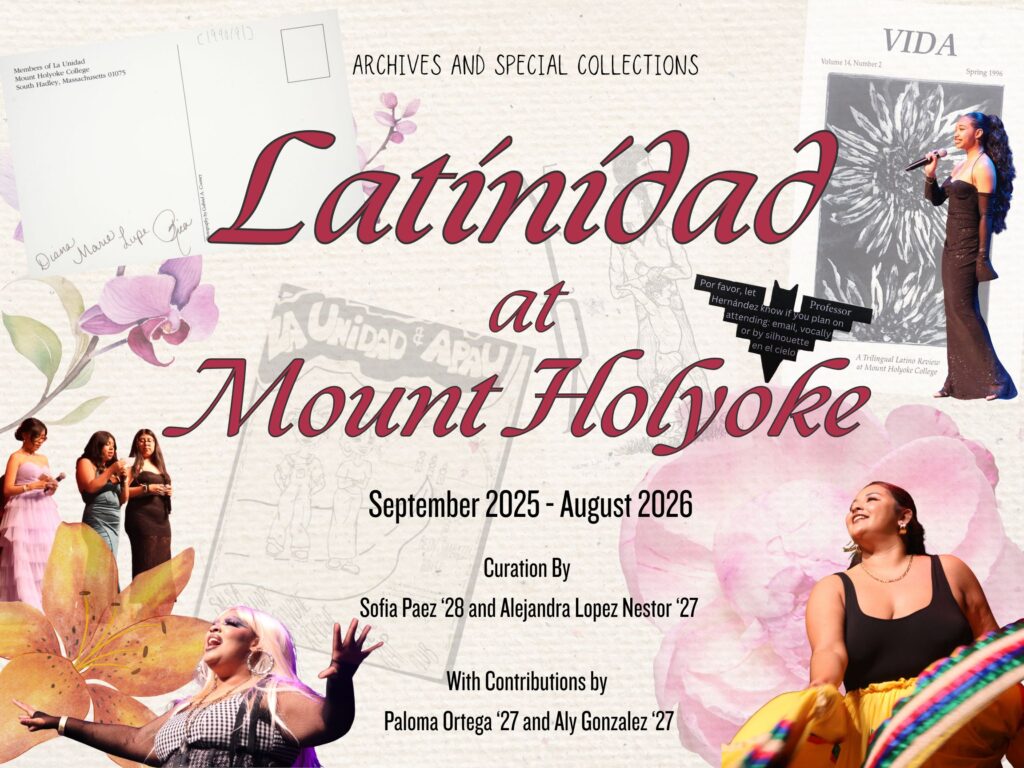Latine spaces at Mount Holyoke were carved out with our bare hands. La Unidad, the Eliana Ortega Cultural House known as “the Ortega”, and Mi Gente were all the result of intense advocacy. It’s through these physical spaces that we can analyze Latínídad’s existence through archival records, but the conversations in classrooms, communions in meal times, dances, music, and laughter shared by Latines represent us as well. In a predominantly white institution, to be seen is a fight to be heard, as well as a fight to exist. Here, within the Reading Room of the Williston Library, we are here to take up space.
Latínídad at Mount Holyoke is the result of an archival project started by La Unidad documenting the history of Latine students on campus. While searching through archives, we noticed inconsistencies and unsettling gaps of information pertaining to our presence, especially within the last two decades. To combat this, the exhibition weaves in archival materials from both the Mount Holyoke College Archives and Special Collections and from the Eliana Ortega Cultural House, where scrapbooks, journals, and photographs of La Unidad are preserved. Together, they trace the story of our existence on campus.
Spanning from 1971 to the present, this exhibit highlights various Latine organizations and projects at Mount Holyoke, such as La Unidad, VIDA, MEChA, and the Mi Gente Living Learning Community. Here, we can see how generations of Latine students have helped define Mount Holyoke. We have created spaces where we can advocate for ourselves or others, where we can bond over shared joy and pain, where we can study, laugh, and grow. On the eve of the 50th anniversary of La Unidad, Latínídad at Mount Holyoke showcases the role the Latine community has played at Mount Holyoke and how, to this day, we fight to maintain these spaces.
Throughout the years, the terms used to describe Latine people have evolved and changed. Latínídad covers two continents and the immense diversity of the people within them. Labels like “Latine” and “Latinx” have only recently come into use. Because of this, the terminology in this exhibit mirrors the terms that were being used at the time, remaining true to those being described.
This exhibit was curated by Alejandra Lopez Nestor ‘27 and Sofia Paez ‘28, with contributions from Aly Gonzalez ‘27 and Paloma Ortega ‘27. Online adaptation by Tracey Kry ‘04, Digital Collections Archivist.
